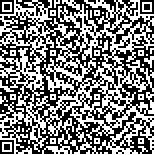| 引用本文: | 陶玲,彭亮,代梨梨,杨镇,陈思媛,可毅,李谷.稻虾轮作模式面源污染排放特征及其能值评估.湖泊科学,2023,35(1):168-180. DOI:10.18307/2023.0111 |
| Tao Ling,Peng Liang,Dai Lili,Yang Zhen,Chen Siyuan,Ke Yi,Li Gu.Characteristics of non-point source pollution emission of rice-crayfish rotation system and its emergy analysis. J. Lake Sci.2023,35(1):168-180. DOI:10.18307/2023.0111 |
|
| |
|
|
| 本文已被:浏览 3149次 下载 3058次 |

码上扫一扫! |
|
|
| 稻虾轮作模式面源污染排放特征及其能值评估 |
|
陶玲, 彭亮, 代梨梨, 杨镇, 陈思媛, 可毅, 李谷
|
|
中国水产科学研究院长江水产研究所, 武汉 430223
|
|
| 摘要: |
| 为探明稻虾轮作模式面源污染排放特征并合理评价该模式的环境可持续性,通过对江汉平原稻虾轮作模式小龙虾养殖排放尾水中总氮(TN)、总磷(TP)、COD和氨氮(NH3-N)浓度进行监测,对稻虾轮作模式稻田养殖小龙虾的排污系数进行了估算,并采用等标污染负荷法进行了主要污染物解析。运用能值分析方法对稻虾轮作模式进行了包含面源污染的能值评估,对比单季稻模式,对其可持续发展能力进行了定量评价。结果表明:江汉平原稻虾轮作模式小龙虾养殖排放尾水中TN、TP、COD和NH3-N的浓度范围分别为0.53~5.36、0.12~0.70、6.60~78.39和0.34~1.75 mg/L,TN、TP和COD平均排放浓度高于《地表水环境质量标准》(GB 3838—2002)Ⅲ类水质标准。等标污染负荷法分析结果表明TN的等标负荷比最高,是稻虾轮作模式面源污染控制的关键污染物。稻虾轮作模式小龙虾养殖排放尾水中TN、TP、COD和NH3-N的排污系数分别为2.994、0.458、35.132和1.405 kg/t,表明稻虾轮作模式面源污染排放系数较低,对环境污染程度总体较小,但也应引起重视,并纳入农业面源污染源排放监测网络当中。包含面源污染的能值分析结果表明,与单季稻模式相比,稻虾轮作模式的可更新资源投入占比、能值产出率和可持续指数更高,环境负载率更低,表明当前的稻虾轮作模式虽然存在一定面源污染风险,但仍具有可持续发展竞争优势。研究结果为估算稻虾轮作模式的面源污染负荷提供了基础数据,为农业面源污染防治和稻虾轮作模式的可持续发展提供了参考依据。 |
| 关键词: 稻虾轮作 面源污染 能值分析 等标污染负荷 排污系数 |
| DOI:10.18307/2023.0111 |
| 分类号: |
| 基金项目:国家自然科学基金项目(U20A2010)、国家重点研发计划项目(2019YFD0900302)、国家现代农业产业技术体系项目(CARS-45-22)和中国水产科学研究院长江水产研究所基本科研业务费项目(YFI20220104)联合资助。 |
|
| Characteristics of non-point source pollution emission of rice-crayfish rotation system and its emergy analysis |
|
Tao Ling, Peng Liang, Dai Lili, Yang Zhen, Chen Siyuan, Ke Yi, Li Gu
|
|
Yangtze River Fisheries Research Institute, Chinese Academy of Fishery Sciences, Wuhan 430223, P. R. China
|
| Abstract: |
| Rice-crayfish rotation system is expanding rapidly and becomes the most widely applied crayfish culture modes in the Jianghan Plain, China. However, the wastewater of these operations is directly discharged into the surrounding water system, and the environmental pollution caused by the crayfish culture in the paddy fields is normally neglected and has not been included in the regulatory system of aquaculture regulations. In order to explore the impact of non-point source pollution emission from the rice-crayfish rotation mode on water environment and evaluate rationally its environmental sustainability, the concentrations of total nitrogen, total phosphorus, chemical oxygen demand and ammonia nitrogen in the drainage from the paddy fields after the harvest of crayfish in the Jianghan Plain were monitored. The results showed that the ranges of concentrations of total nitrogen, total phosphorus, chemical oxygen demand and ammonia nitrogen in the effluent were 0.53-5.36, 0.12-0.70, 6.60-78.39 and 0.34-1.75 mg/L, respectively, and the average concentrations of total nitrogen, total phosphorus and chemical oxygen demand all have exceeded the class III water quality standard in the environmental quality standards for surface water (GB 3838-2002). According to the equivalent standard analysis, total nitrogen was the primary pollutant to the environment which showed the highest equivalent standard load ratio. The amounts of discharge of total nitrogen, total phosphorus, chemical oxygen demand and ammonia nitrogen per ton crayfish were 2.994, 0.458, 35.132 and 1.405 kg/t, respectively. The emergy analysis with the integration of environmental pollution showed that the renewable fraction and emergy sustainability index of rice-crayfish rotation system was higher than the rice monoculture system and environmental loading ratio was lower. The results indicated that the non-point source pollution discharge rates of rice-crayfish system were relatively low and rice-crayfish rotation system was more sustainable, as indicated by lower environmental pressure and higher emergy sustainability index. Nevertheless, it is urgent to incorporate wastewater discharged from rice-crayfish farming into the supervision system of aquaculture wastewater discharge regulations and formulate environmental pollution risk control policies to ensure the sustainable development of the rice-crayfish integrated system. The results provided basic data for the further accounting of the pollution contributions of rice-crayfish farming and basis for the non-point source pollution prevention and control, and the sustainable development of rice-crayfish rotation farming. |
| Key words: Rice-crayfish rotation system non-point pollution emergy analysis equal standard pollution pollution discharging coefficients |
|
|
附件
|
|